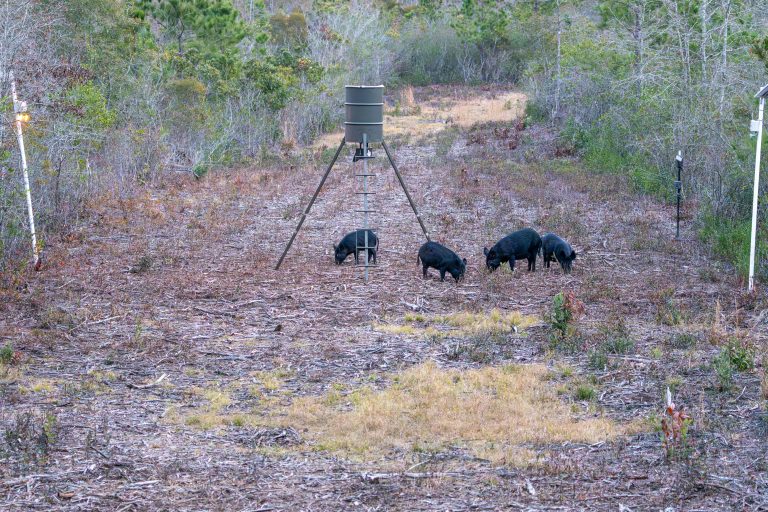A bill advancing in the Montana legislature seeks to ban the use of electronic motion-detecting devices for hunting, a move aimed at preserving the tradition of fair chase and ethical hunting practices. The measure, supported by a majority of lawmakers, would prevent hunters from using motion-tracking technology to detect game in real time.
Supporters argue that such devices give hunters an unfair advantage, violating the principle of fair chase by making locating and harvesting animals easier. Montana Fish, Wildlife & Parks officials have voiced concerns over the increasing reliance on technology in hunting, saying that motion sensors, remote cameras, and other electronic aids could diminish the skill and effort traditionally required in the field.

However, critics of the bill warn that banning electronic motion detectors could have unintended consequences. Some hunters, particularly those with disabilities or mobility limitations, rely on technology to level the playing field, allowing them to participate in hunting activities that might otherwise be inaccessible. Opponents also argue that some electronic tracking devices play a role in ethical hunting by helping ensure clean, humane kills, reducing the risk of wounding animals that might otherwise escape and suffer.
Additionally, the prohibition raises enforcement concerns. With modern trail cameras and scouting technology becoming more sophisticated, defining what constitutes a “motion-detecting device” could prove complicated, leading to potential legal gray areas and challenges for both hunters and wildlife officials.
Despite these concerns, the bill continues to gain traction, with proponents insisting that restricting hunting technology preserves the sport’s spirit. If passed, Montana will join a growing list of states taking steps to regulate the increasing role of electronics in the field.
If Montana’s bill banning electronic motion trackers for hunting becomes law, it could set a precedent for other states considering similar regulations. Many states already have restrictions on hunting technology, but this move could spark a broader discussion about the role of electronics in modern hunting and whether other advancements, such as cellular trail cameras, thermal optics, and GPS-enabled scouting tools, should also be restricted.
Potential Nationwide Implications
- Increased Restrictions on Hunting Technology:
If Montana successfully implements this law, other states with strong fair-chase traditions, such as Wyoming, Idaho, and Colorado, may follow suit. Lawmakers and wildlife agencies may use Montana’s approach as a model to introduce their own bans on motion-tracking technology or expand restrictions on digital tools used for hunting. - Impact on Conservation and Wildlife Management:
Some argue that technological advancements in hunting help with population control, allowing hunters to manage deer, elk, and predator populations efficiently. If more states adopt bans on motion-detecting devices, it could reduce hunter success rates, potentially leading to increased animal populations and a greater burden on wildlife management agencies to prevent overpopulation and habitat degradation. - Challenges for Disabled and Elderly Hunters:
Many disabled and elderly hunters use motion-detecting technology to compensate for physical limitations. If Montana’s ban spreads to other states, it could disproportionately affect these groups, making it harder for them to participate in hunting activities. Advocacy groups may push for exemptions or alternative solutions, such as special permits for disabled hunters to continue using certain electronic aids. - Legal and Enforcement Issues:
If other states adopt similar bans, they may face difficulties in defining and regulating motion-tracking devices. Some technologies, such as cellular trail cameras and remote scouting apps, function similarly to motion detectors but operate differently. States implementing broad bans without clear definitions could find themselves in legal battles over enforcement and interpretation. - Shifts in Hunting Tactics and Ethics Debates:
As more states consider restrictions on electronics in hunting, the industry may see a resurgence of traditional skills such as tracking, still-hunting, and calling techniques. Some traditionalists see this as a positive shift, while others believe it penalizes hunters who use technology responsibly. The debate over fair chase, ethical hunting, and the role of modern technology could intensify across the country.
Could a Federal Regulation Follow?
While hunting laws are primarily state-regulated, if a national movement against electronic motion-tracking devices gains traction, federal agencies like the U.S. Fish and Wildlife Service could consider nationwide regulations, particularly on federally managed lands such as national forests and Bureau of Land Management (BLM) properties. This could lead to uniform rules across multiple states, affecting hunters nationwide.
Montana’s proposed bill is not just a local issue—it could have ripple effects that shape the future of hunting regulations across the United States. As the balance between tradition and technology continues to evolve, hunters, lawmakers, and conservationists will need to navigate the challenges and benefits of an increasingly high-tech hunting landscape.
Per our affiliate disclosure, we may earn revenue from the products available on this page. To learn more about how we test gear, click here.



